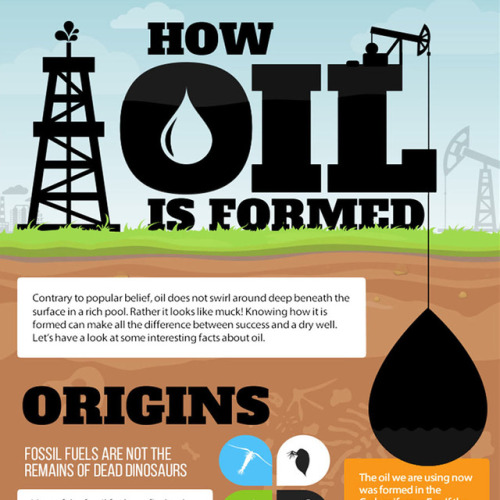#economy
“No economic activity was more irrepressible [in the 14th century] than the investment and lending at interest of money; it was the basis for the rise of the Western capitalist economy and the building of private fortunes-and it was based on the sin of usury.” — Barbara Tuchman http://bit.ly/2Pb9V6y-http://bit.ly/2Yx9SFh #economy #money #capitalism #usury #usuryquotes #barbaratuchman #barbaratuchmanquotes
https://www.instagram.com/p/B-SC8jGFecbREh8IOXIWY7FQ0Tv9rS15hqJCfE0/?igshid=e5bhsfcj347y
Post link
Yamashita san, a tired old worker at the Shibuya crossing.
The Japanese government has decided to raise the official age of retirement to age 65 by 2025. People over 65 are now expected to account for 60 per cent of Japan’s population by 2060, according to government’s estimates. The country could lose more than 27 million workers in future if it does not address some of the lowest birth-rates in the world, at just 1.4 children per woman.
Photo : Pierre-Emmanuel Delétrée
Post link
Architectural Economy (1920) - Two Story Residence No. 4012


Hello weekend, let’s study!
therearenogirlsontheinternets:
Think about it.
it will economically devastate women, forcing them to seek out and remain in relationships with (potentially abusive) men in order to avoid poverty. forced birth advocates often see this as protecting marriage and the family— the economic impact of forced birth on women is not just a consequence they don’t care about or haven’t foreseen, it’s THE POINT to keep us in our place.
poverty is used to keep a class of women sexually available to men through either marriage (conservatives) or prostitution (liberals)
The economic impact of forced birth on women is not just a consequence they don’t care about or haven’t foreseen, it’s THE POINT to keep us in our place.
If women can’t prevent pregnancy - and make no mistake about it, they are coming for hormonal contraceptives next - and can’t end a pregnancy, and can’t afford childcare for multiple children, then she can’t afford to stay in school or work full-time. And gosh, well, that just opens up a bunch of positions in higher education and the workforce for men, doesn’t it? If you think this is about anything other than forcing women out of the workforce and into marriage and families, you aren’t paying attention.
Post link
The 21 Century #economy will be dependent on effective #diplomacy .
| #JoeBiden | #Biden | #Japan | #tokyo | #Asia
https://www.instagram.com/p/Cd8qQnzO9H3/?igshid=NGJjMDIxMWI=
Post link
Editorial illustration for Zeit Geld based on an article titled “how to sell a property”
In order what topics have been treated:
- 1st_pic) How valuable is my property? - 2nd_pic) How to find a buyer?
- 3rd_pic) How to make an appointment to view an apartment? @diezeit
Thanks to my agency @kombinatrotweiss_illustration .
.
.
.
#dieziet #illustration #conceptual #house #home #realestate #treasure #sea #snorkeling #value #economy #money #pin #clock #magazine
https://www.instagram.com/p/BqxpYPgFTNr/?utm_source=ig_tumblr_share&igshid=1tkrqqdlvwd8u
Post link
HACKING THE CITY: A NEW MODEL FOR URBAN RENEWAL
On a sunny morning in March, Marcus Westbury brandished his iPad as if it were a window into another world. The screen depicted the street we were standing on in downtown Newcastle, Australia, circa 2008. Decades of suburban flight, a devastating 1989 earthquake, and the implosion of the city’s steel mills had left the center a ghost town. More than a hundred empty storefronts lined the commercial strip. The neoclassical post office and the Victoria—Australia’s second-oldest theater—both sat vacant. The street could have doubled as a set for The Walking Dead.
Now the sidewalks were bustling. The windows of the David Jones department store, another recent casualty, were filled with sculptors, milliners, jewelers, and stonemasons publicly plying their trades. Families sipped flat whites and leisurely ate breakfast at outdoor cafés. Compared to the desolate scenes of just a few years ago, the transformation was startling, especially considering it all stemmed from a bit of legal sleight-of-hand.
Post link
Why do we measure freedom? Because freedom is inherently valuable and plays a central role in human progress.
The United States ranks 17th in the fourth annual Human Freedom Index (HFI), the most comprehensive measure of freedom ever created for a large number of countries around the globe. Overall, the report finds global freedom has fallen slightly since 2008.
“The Rule of Law continues to be a weak point for the United States, which has relatively low ratings when it comes to such areas as the protection of property rights, the enforcement of contracts, and criminal justice,” says co-authorIan Vásquez. “The Rule of Law plays a fundamental role in upholding liberty, so anyone who cares about freedom in the United States should be concerned with its evolution.”
Explore the 2018 Human Freedom Index — released today in honor of Human Rights Day — and see how your country ranks. Then, join the conversation on Twitter with #FredomIndex18…

A new Cato Institute study that relies on 37 years worth of data for 50 foundational commodities covering energy, food, materials, and metals to develop a new framework to measure resource availability finds that,instead of making resources scarcer, population growth has gone hand in hand with greater resource abundance.
The report builds on the famous wager between biologist Paul Ehrlich and economist and former Cato Senior Fellow Julian Simon on the effect of population growth on the Earth’s resources. While Ehrlich warned that population growth could deplete resources and lead to global catastrophe, Simon saw humans as the “ultimate resource” who could innovate their way out of such shortages. The Ehrlich-Simon wager tracked the real price of a basket of five raw materials between 1980 and 1990, finding as Simon hypothesized that all measured commodities decreased in price by an average of 57.6 percent, despite a population increase of 873 million.
Expanding on Simon’s original insight, the new study looks at 50 different commodities and analyzes a longer time period between 1980 and 2017, finding that the real price of the commodities decreased by 36.3%.
The study also introduces a new measure termed “time-price,” the time that an average human must work in order to earn enough money to buy a particular commodity. They find the time-price of their basket of 50 commodities has fallen by 64.%. Put differently, commodities that took 60 minutes of work to buy in 1980 took only 21 minutes of work to purchase in 2017. Should the current trend continue, commodities could become 50 percent cheaper every 26 years.
In addition, the authors develop the concept of price elasticity of population (PEP), which allows them to estimate the effect of population growth on the availability of resources. Over the time period studied the population grew from 4.46 billion to 7.55 billion, a 69.3% increase. The PEP indicates that the time-price of the basket of commodities declined by 0.934% for every 1% of increase in population. Every additional human being born on our planet appears to make resources proportionally more plentiful for the rest of us.
Using the PEP values the authors form the Simon Abundance Framework, which describes progression from decreasing abundance at the one end to increasing abundance at the other end. The authors conclude that humanity is experiencing superabundance with the time-price commodities decreasing at a faster proportional rate than the population is increasing.
Finally, the authors produce the Simon Abundance Index (SAI) that represents the ratio of the change in population over the change in the time-price. Between 1980 and 2017, resource availability increased at a compounded annual growth rate of 4.32%, meaning Earth was 379.6% more abundant in 2017 than it was in 1980.
The time-price of commodities could fall a further 29% over the next 37 years as humanity continues to make resources more plentiful through greater efficiency of use, increased supply, and the development of cheaper substitutes.However,for this trend to continue, market incentives and the price mechanism must endure.
The world is a closed system in the way that a piano is a closed system. The instrument has only 88 notes, but those notes can be played in a nearly infinite variety of ways. The same applies to our planet. The Earth’s atoms may be fixed, but the possible combinations of those atoms are infinite. What matters, then, is not the physical limits of our planet, but human freedom to experiment and reimagine the use of resources that we have.

For nearly 250 years, the United States has recovered from enormous economic and political shocks, including the Civil War, two World Wars, the Great Depression, and the high inflation and oil crises of the 1970s. Following each of these events, the U.S. economy returned to its previous economic trend.
In sharp contrast to this historical record of recovery, ten years after the Great Recession of 2007-2009, the U.S. economy shows no sign of recovering as it did following previous downturns — an unprecedented failure.
Brazil allocates 166 MW of solar in A-4 auction
The Brazilian authorities awarded around 950 MW of renewables capacity in the nation’s latest auction, including 183 MW of wind, 400 MW of thermal capacity, and 189.5 MW of small-sized hydroelectric power. The final average price for solar came in at $0.0376/kWh.
 ALT
ALTEmpresa de Pesquisa Energetica (EPE), a Brazilian government-run energy agency, allocated around 166 MW of PV capacity in its A-4 energy auction on Friday.
Overall, the EPE assigned around 950 MW of renewable energy capacity in the auction. This included 183 MW of wind power, 400 MW of thermal capacity, and 189.5 MW of small-sized hydroelectric power facilities.
The five solar projects in the procurement exercise are all located in the state of Pernambuco. Their average final price is BRL 178.24 ($37.6)/MWh.

![“No economic activity was more irrepressible [in the 14th century] than the investment and lending a “No economic activity was more irrepressible [in the 14th century] than the investment and lending a](https://64.media.tumblr.com/7a294ec5ae96bd1468ec21f1ca21b93b/c460bc6a71377a1d-e8/s500x750/477118d00cc51f8457a820a65071389a071e1b05.jpg)

















